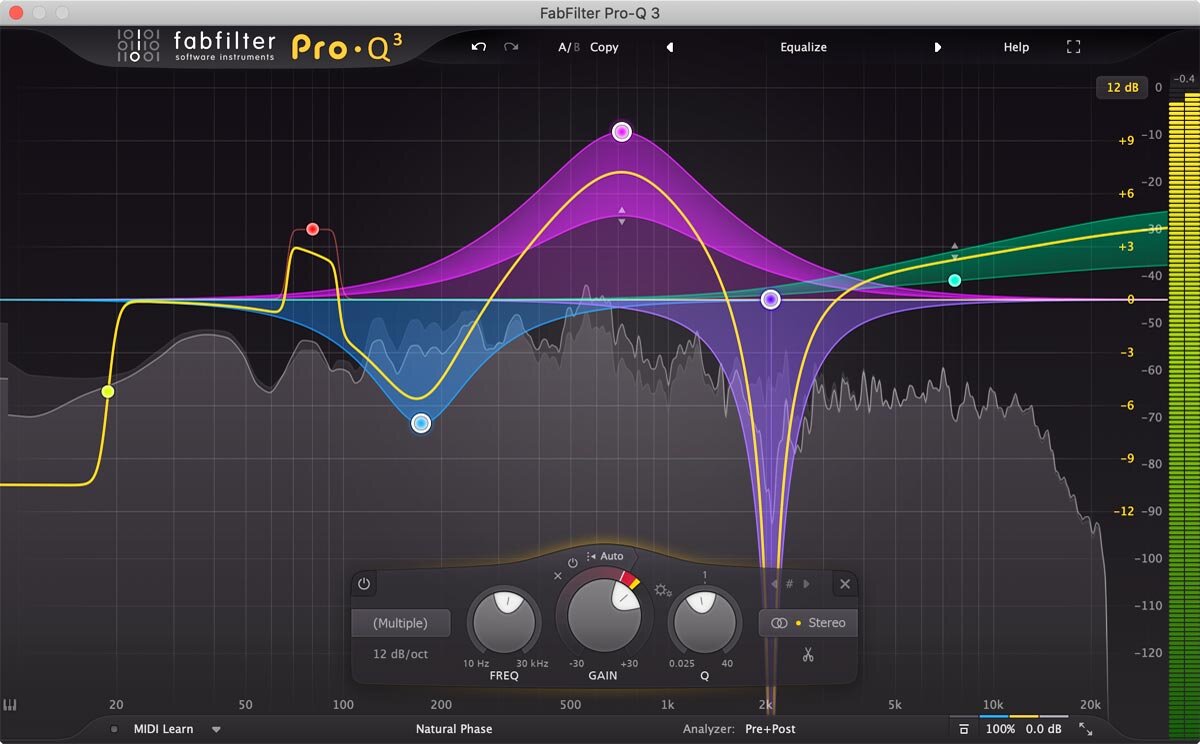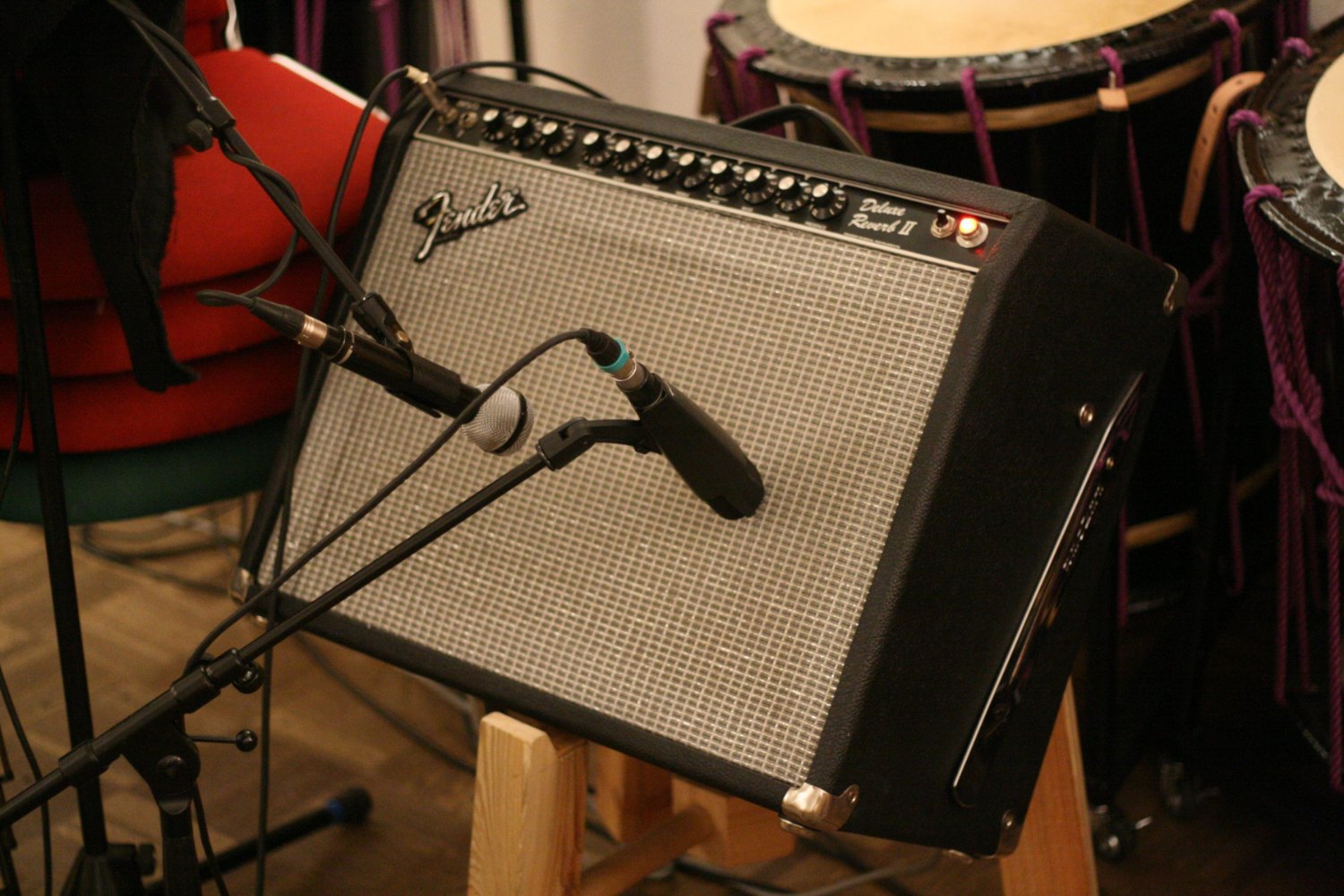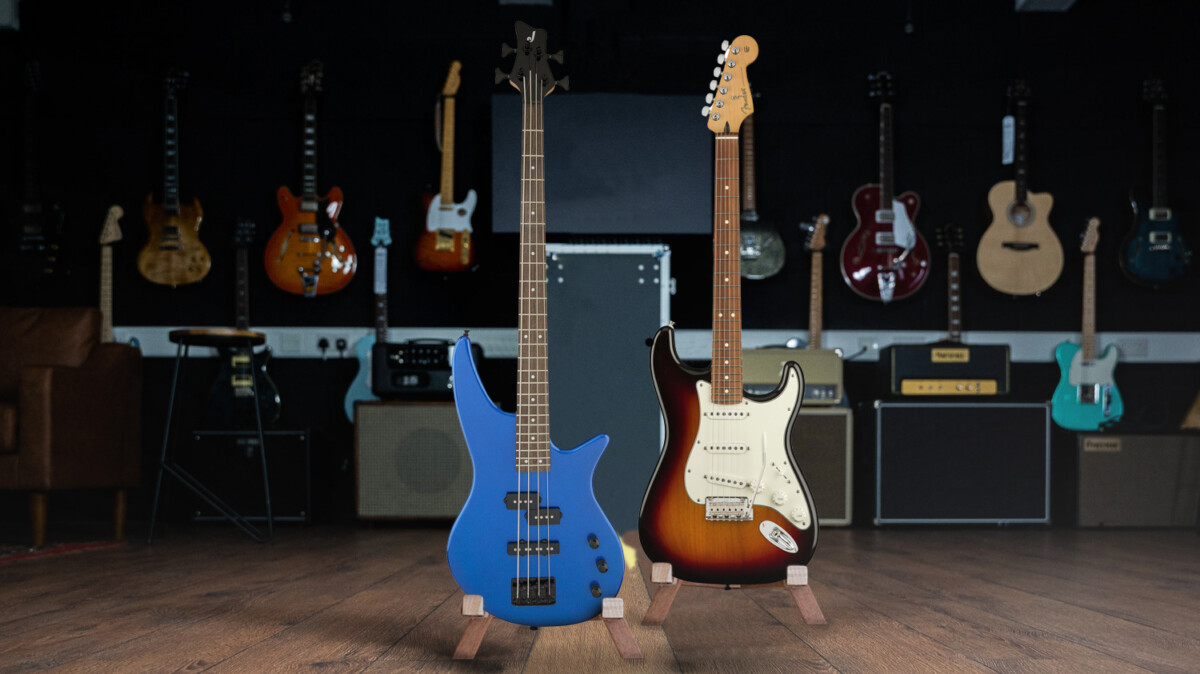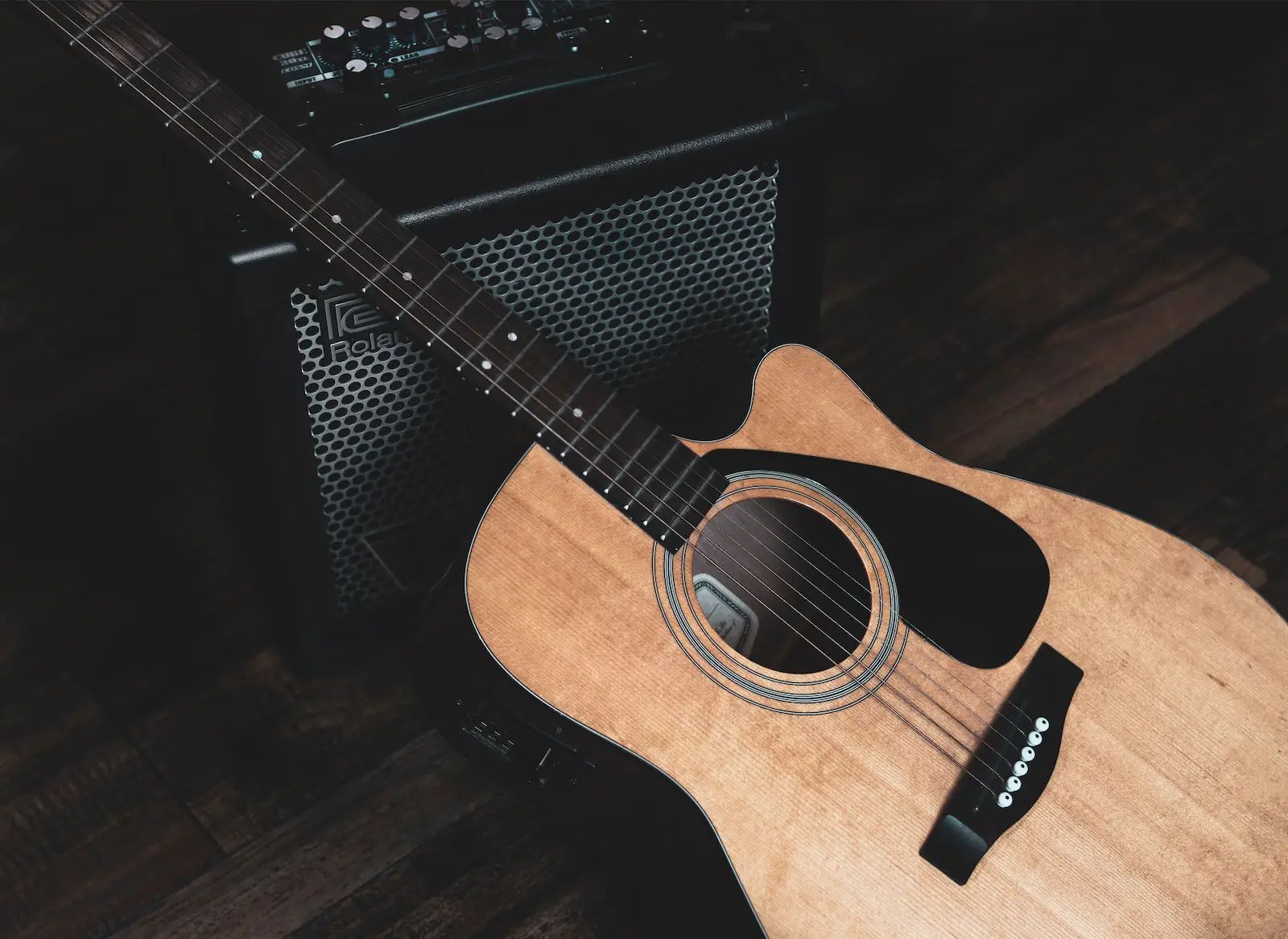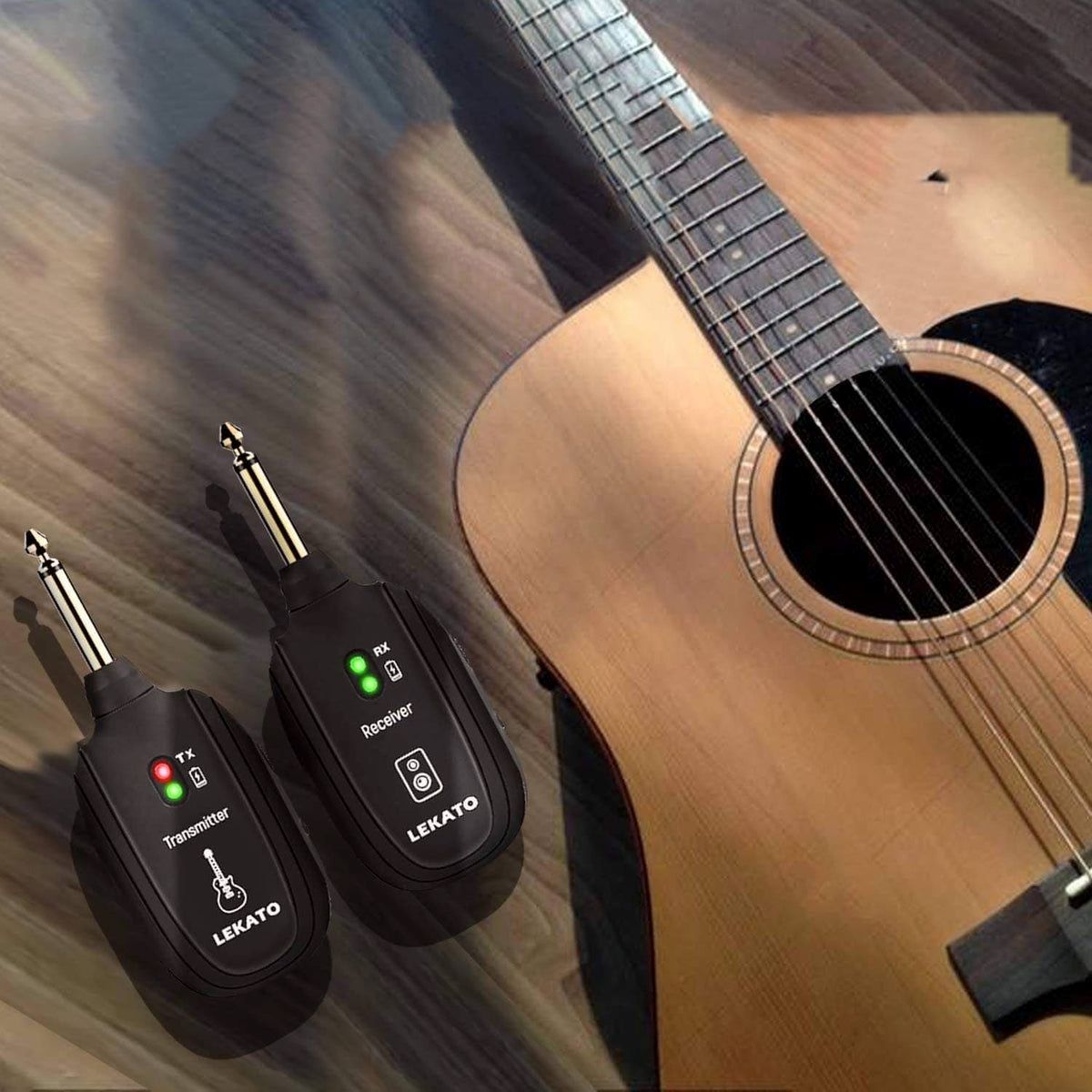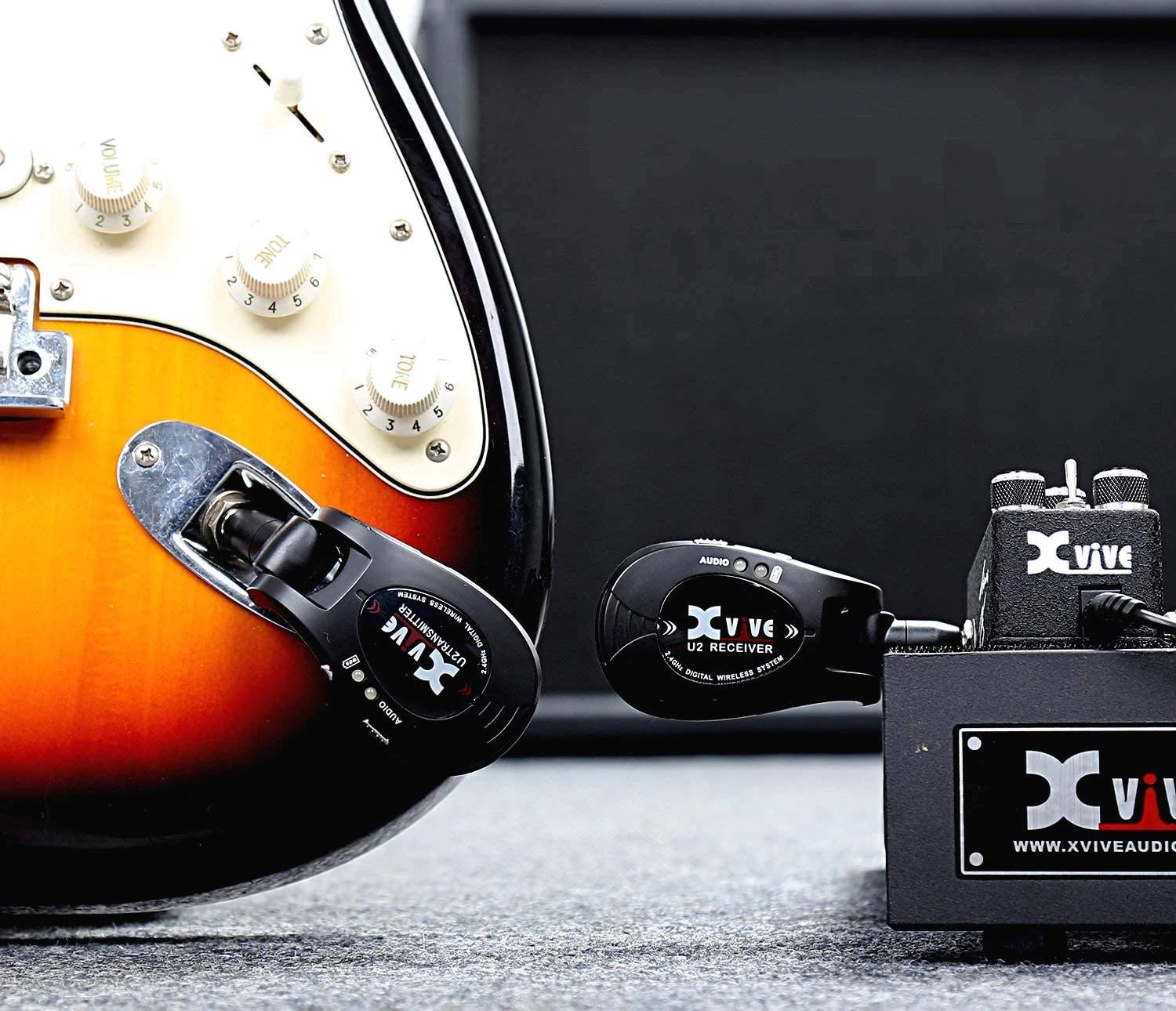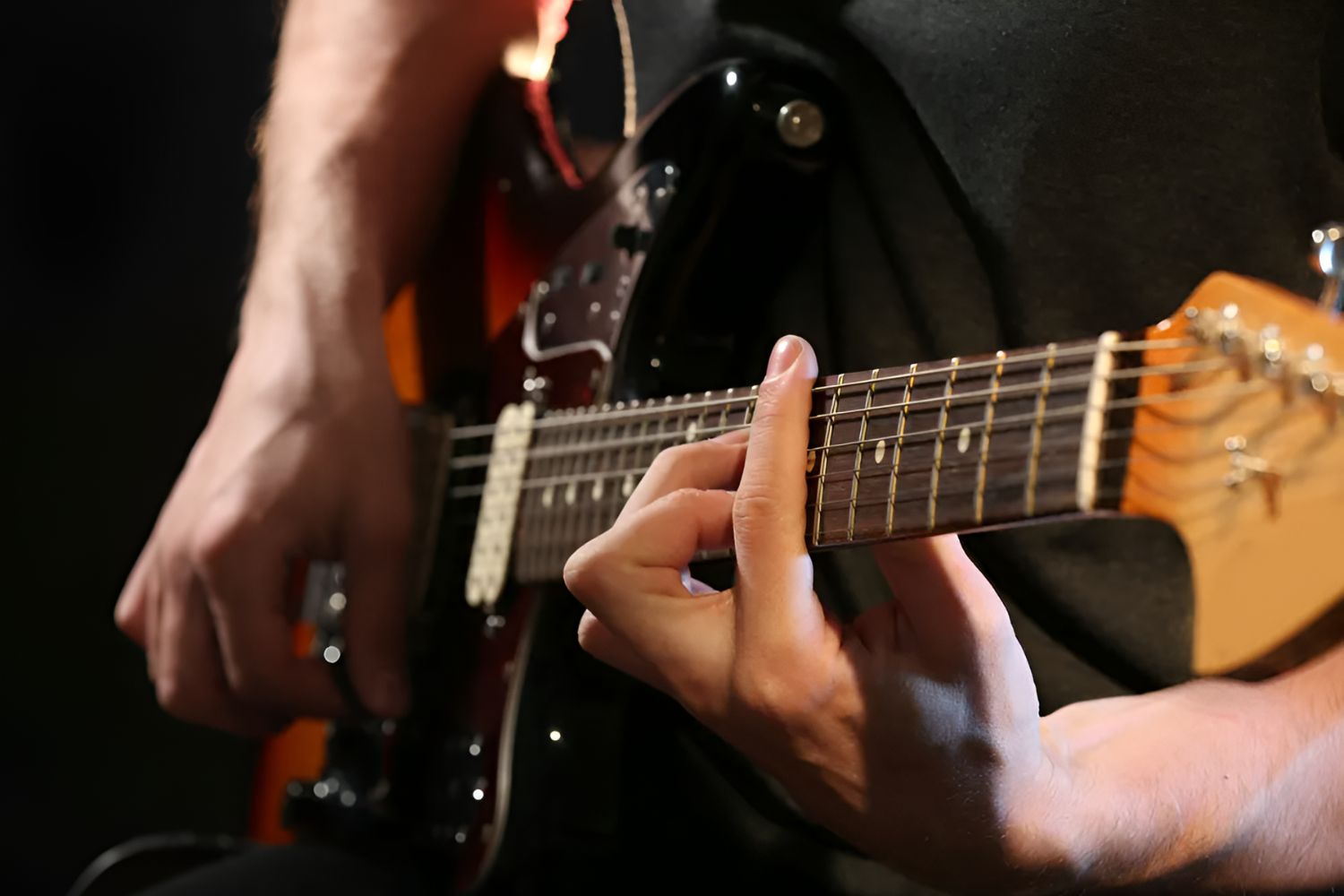Introduction
The electric guitar is an iconic instrument that has shaped the landscape of modern music. From the soulful blues to the electrifying energy of rock and roll, the electric guitar's versatility knows no bounds. At the heart of its captivating sound lies the concept of frequency range. Understanding the frequency range of an electric guitar is crucial for musicians, audio engineers, and enthusiasts alike. This article delves into the intricacies of electric guitar frequency range, its significance, and the factors that influence it.
The frequency range of an electric guitar refers to the spectrum of frequencies it can produce, spanning from the lowest to the highest audible tones. This range is a defining characteristic of the guitar's tonal capabilities, influencing its timbre, clarity, and overall sonic footprint. Exploring the nuances of frequency range unveils the diverse sonic palette that can be harnessed through this instrument, offering a deeper appreciation for its sonic potential.
Stay tuned as we unravel the significance of frequency range in electric guitars, dissect the factors that impact it, and uncover strategies to optimize and harness its full potential. Whether you're a seasoned guitarist, an aspiring musician, or simply a lover of music, understanding the electric guitar's frequency range will undoubtedly enrich your sonic journey.
Understanding Frequency Range
Frequency range, in the context of electric guitars, encompasses the span of frequencies that the instrument can produce. This range is measured in Hertz (Hz) and extends from the lowest bass notes to the highest treble tones. Visualizing frequency range can be likened to a musical spectrum, where the lower frequencies represent the rumbling resonance of bass notes, while the higher frequencies embody the shimmering brilliance of treble tones.
Each note produced by the electric guitar corresponds to a specific frequency, with lower pitches resonating at lower frequencies and higher pitches vibrating at higher frequencies. The collective amalgamation of these frequencies forms the guitar’s sonic identity, yielding a rich and diverse tonal landscape.
Understanding the frequency range of an electric guitar involves grasping the concept of fundamental frequencies and harmonics. The fundamental frequency of a note is the primary pitch that is perceived, while harmonics are multiples of the fundamental frequency that contribute to the overall timbre and character of the sound. By comprehending the interplay between fundamental frequencies and harmonics, musicians can harness the full expressive potential of the instrument, sculpting tones that resonate with depth and clarity.
Moreover, delving into the frequency range unveils the concept of frequency response, which denotes the guitar’s ability to faithfully reproduce a wide spectrum of frequencies without distortion or attenuation. A balanced frequency response ensures that the guitar can articulate both the thunderous resonance of low-end power chords and the crystalline articulation of high-frequency solos, offering a dynamic and immersive sonic experience.
As we unravel the intricacies of frequency range, we embark on a sonic journey that transcends mere notes and melodies, delving into the very essence of the electric guitar’s sonic identity. By comprehending the nuances of frequency range, musicians and enthusiasts alike gain a profound insight into the instrument’s sonic capabilities, fostering a deeper appreciation for its boundless expressive potential.
Importance of Frequency Range in Electric Guitars
The frequency range of an electric guitar holds immense significance in shaping its sonic footprint and expressive capabilities. It serves as a fundamental pillar upon which the instrument’s tonal versatility and emotive resonance are built. Understanding the importance of frequency range in electric guitars unveils the profound impact it has on musical expression, audio production, and the overall sonic experience.
First and foremost, the frequency range directly influences the timbral characteristics of the electric guitar. The lower frequencies bestow depth and warmth upon the sound, anchoring the sonic landscape with resonant power, while the higher frequencies imbue the music with brilliance and articulation, adding shimmer and definition to each note. This interplay of frequencies forms the sonic tapestry of the guitar, endowing it with a rich and diverse tonal palette that transcends musical genres and styles.
Moreover, the frequency range plays a pivotal role in defining the guitar’s presence within a mix. A broad frequency range empowers the guitar to carve its sonic niche within an ensemble, ensuring that its tonal nuances are faithfully reproduced and seamlessly integrated into the overall sonic tapestry. Whether it’s the thunderous chug of palm-muted riffs or the soaring wail of lead solos, an expansive frequency range enables the guitar to command attention and evoke emotion with unparalleled clarity and impact.
Furthermore, the importance of frequency range extends to the realm of audio production and sound engineering. A comprehensive understanding of the guitar’s frequency range empowers producers and engineers to sculpt its sonic characteristics, tailoring its tonal profile to suit the demands of a musical arrangement or recording. By harnessing the full spectrum of frequencies, from the rumbling lows to the crystalline highs, audio professionals can capture the essence of the guitar’s sound with precision and finesse, ensuring that its sonic presence resonates with authenticity and vibrancy.
As we unravel the importance of frequency range in electric guitars, we gain a profound appreciation for its role in shaping the instrument’s sonic identity and expressive potential. From the resonant depths of the bass frequencies to the shimmering heights of the treble tones, the frequency range serves as a conduit for musical emotion and artistic expression, enriching the sonic landscape with its boundless versatility and emotive resonance.
Factors Affecting Electric Guitar Frequency Range
The frequency range of an electric guitar is influenced by a myriad of factors, each playing a pivotal role in shaping the instrument’s sonic characteristics and tonal capabilities. Understanding these factors unveils the intricate nuances that define the guitar’s frequency range, offering valuable insights for musicians, luthiers, and audio enthusiasts alike.
One of the primary factors impacting the electric guitar’s frequency range is the construction and design of the instrument itself. The choice of tonewoods, the construction of the body and neck, and the type of pickups all contribute to the guitar’s tonal profile and frequency response. For instance, guitars crafted with dense tonewoods such as mahogany may exhibit a pronounced low-end response, enriching the instrument’s bass frequencies, while guitars with maple tops might deliver enhanced clarity and articulation in the higher frequency spectrum.
Additionally, the type of pickups installed on the guitar significantly influences its frequency range. Single-coil pickups are renowned for their bright and articulate tonal characteristics, accentuating the higher frequencies with clarity and definition. In contrast, humbucker pickups are celebrated for their robust low-end response and thick, creamy midrange, sculpting the guitar’s frequency range with a different sonic signature. The choice of pickups, therefore, plays a pivotal role in shaping the guitar’s tonal palette and frequency response.
Furthermore, the gauge and material of the guitar strings exert a substantial impact on its frequency range. Lighter gauge strings may emphasize the higher frequencies, lending a brighter and more responsive character to the instrument, while heavier gauge strings can enhance the low-end depth and sustain, augmenting the bass frequencies with added resonance and power. The material composition of the strings, whether nickel, stainless steel, or coated variants, also contributes to the guitar’s frequency range, influencing its tonal balance and sonic projection.
Another crucial factor affecting the electric guitar’s frequency range is the amplifier and effects chain utilized in conjunction with the instrument. The amplifier’s EQ settings, the choice of overdrive or distortion pedals, and the utilization of modulation and time-based effects all play a role in sculpting the guitar’s frequency response and tonal characteristics. By manipulating these variables, musicians can tailor the instrument’s frequency range to suit their sonic preferences and musical expressions.
As we delve into the factors affecting electric guitar frequency range, we uncover the intricate interplay of design, materials, and sonic manipulation that shape the instrument’s sonic identity. From the resonant influence of tonewoods to the expressive nuances of pickups and strings, each factor contributes to the guitar’s frequency range, enriching its sonic palette with diverse tonal textures and emotive resonance.
How to Optimize Electric Guitar Frequency Range
Optimizing the frequency range of an electric guitar is a multifaceted endeavor that encompasses various aspects of instrument setup, tonal sculpting, and sonic exploration. By employing strategic techniques and leveraging the inherent characteristics of the guitar, musicians can unlock the full potential of its frequency range, enhancing its sonic expressiveness and tonal versatility.
One fundamental method to optimize the electric guitar’s frequency range is through meticulous setup and intonation. Ensuring that the guitar is properly intonated and the action is appropriately adjusted facilitates even string response across the entire fretboard, allowing for consistent articulation and resonance across the frequency spectrum. Additionally, selecting the appropriate string gauge and material can profoundly impact the instrument’s frequency range, tailoring its tonal characteristics to align with the desired sonic palette.
Exploring different pickup configurations and tonal settings on the guitar and amplifier can significantly influence its frequency range. Experimenting with single-coil and humbucker pickups, adjusting pickup heights, and manipulating the tone and volume controls can sculpt the instrument’s tonal profile, expanding its frequency range and sonic versatility. Furthermore, utilizing EQ pedals or onboard equalization to fine-tune the guitar’s frequency response empowers musicians to accentuate specific frequency bands, enhancing the instrument’s tonal expressiveness and sonic impact.
Another approach to optimize the electric guitar’s frequency range is through the strategic application of effects and signal processing. Utilizing overdrive, distortion, and fuzz pedals can augment the guitar’s harmonic content, enriching its frequency range with harmonic overtones and saturated textures. Additionally, employing modulation effects such as chorus, phaser, and flanger can expand the instrument’s sonic footprint, infusing the frequency range with spatial depth and dynamic movement.
Furthermore, exploring alternate tunings and extended range techniques can unlock new dimensions within the electric guitar’s frequency range. From drop tunings that emphasize the lower frequencies to open tunings that enrich the harmonic content, these approaches offer novel avenues for expanding the instrument’s sonic palette and expressive potential. Additionally, incorporating extended-range instruments such as seven-string or eight-string guitars broadens the frequency range, introducing deeper bass notes and extended treble tones, further enhancing the instrument’s sonic diversity.
By embracing these techniques and methodologies, musicians can embark on a sonic odyssey that transcends the conventional boundaries of the electric guitar’s frequency range. Through meticulous setup, tonal exploration, and creative sonic manipulation, the instrument’s frequency range can be optimized to resonate with unparalleled expressiveness, versatility, and emotive power.
Conclusion
Exploring the intricate realm of electric guitar frequency range unveils the profound impact it holds on the instrument’s sonic identity and expressive potential. From the resonant depths of the bass frequencies to the shimmering heights of the treble tones, the frequency range serves as a conduit for musical emotion, enriching the sonic landscape with its boundless versatility and emotive resonance.
Understanding the nuances of frequency range empowers musicians, audio engineers, and enthusiasts to unlock the full sonic potential of the electric guitar. By delving into the interplay of fundamental frequencies and harmonics, the influence of construction and design, and the strategic application of effects and signal processing, the guitar’s frequency range can be optimized to resonate with unparalleled expressiveness and tonal versatility.
As we navigate the sonic intricacies of frequency range, we gain a profound appreciation for its role in shaping the instrument’s tonal characteristics, presence within a mix, and overall sonic impact. The frequency range of an electric guitar transcends mere technical specifications, embodying the very essence of musical expression and artistic creativity.
Whether it’s the thunderous resonance of power chords, the searing articulation of lead solos, or the emotive depth of melodic passages, the electric guitar’s frequency range serves as a canvas for sonic innovation and emotive storytelling. It is a testament to the instrument’s enduring legacy and its ability to captivate audiences with its rich and diverse tonal palette.
In essence, the frequency range of an electric guitar is not merely a technical attribute; it is a gateway to sonic exploration, creative expression, and emotive resonance. By embracing the nuances of frequency range, musicians embark on a sonic odyssey that transcends conventional boundaries, enriching the musical landscape with boundless creativity and expressive depth.







